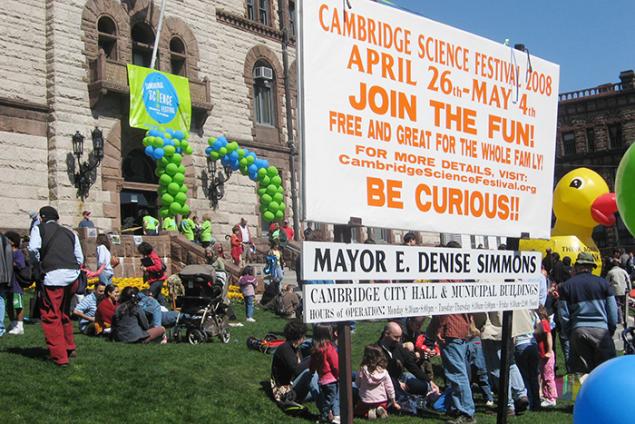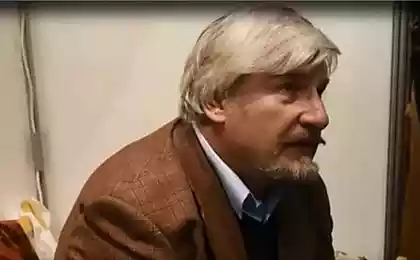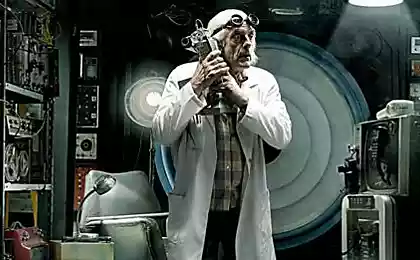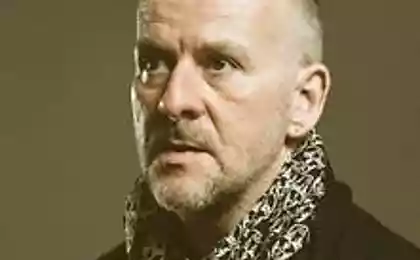719
Going to the people: British scientists on how to explain science to the masses

© The Gourmand
In the modern world, science plays a much bigger role than it might seem at first glance. Proper nutrition, family planning, treatment of various diseases and even success in business will largely depend on research in the field of Microbiology, genomics, mathematics and physics. But to make a choice in favor of a particular treatment in a particular technology, you need to navigate the latest scientific discoveries and achievements. The importance of dialogue between scientists and society is still undervalued. Experts from the Sanger Institute and Cambridge shared with T&P British experience of the popularization of science. Understanding science is not just knowledge of certain scientific facts, but the ability to analyze, evaluate, and consider the possible risks and consequences. It is obvious that reliable information can only be obtained from the scientists themselves, but "reach out" to them can be difficult. Science as if there is a "behind the glass" we see the results of scientific activities, but the experience of this world can't. To change the situation, the US and the UK, followed by several other European countries made popularization of science a compulsory part of the studies.
Learn slushatel 1985 in England came to an official document "About the understanding of science by the public", the so-called report Bodmer, which obliged the scientific world to share with the public their knowledge and achievements.
Julie Willingale-Ten, head of Public Engagement, the Institute of Sanger, one of the largest genomic research centers "At the time we saw it as our task to tell people what scientists do: what kind of projects they work, what value does it have and so on. Since then, much has changed. It is not just about broadcasting ideas and scientific facts, as often occurs in conventional PR. Now we're talking about building dialogue and trust between scientists and society. This Union, therefore, we call our Public Engagement activities.
To receive public or state money for the project, it is necessary to justify. This can be done only after explaining its purpose and meaning. Thus, if a scientist tells the General public about your project at the stage of its development, it can seek its recognition, and ultimately get more money."
Identify the audience
For a scientist it is important to understand who he was going to talk about science. Before you tell the world about your project, ask yourself: "Who are these people? How old are they? What is their background? Me future scientists or simply curious? They have known of this scientific field? What they are doing and interested in? How can I inspire? What are the possible communication barriers and how to overcome them (e.g., fear of public speaking, lack of confidence, language difficulties, etc.)?".
One of the main objectives of popularization of science — engaging science in young, therefore, the most important audience is children, or rather pupils and students. It is worth considering that for some fields of knowledge there is an age limit. For example, problems of genomics makes no sense to discuss with children under the age of 14. But the basics of physics like gravity, it is possible to talk with younger students.In British schools the staff of the research institutes carry out extracurricular lessons, build their lectures in the school schedule, participate in open days, mentoring individual students, organize trips for students in your Institute. They also work with teachers, helping them to understand the latest research.
Julie Willingale-Ten, head of Public Engagement, the Institute of Sanger, one of the largest genomic research centers "Genomics is a new and rapidly developing area. Of course, there are many teachers who have graduated from the school 20-30 years ago, there was no such item in the schedule. We are trying to introduce teachers to current research, conduct them with special courses and training workshops, creating online resources for learning."
Here are the basic rules that are important to follow when working with schools:
• in addition to your subject, schools have many different priorities, it is therefore important to adapt an existing schedule and to plan your classes;
• collaborate with teachers: meet and discuss with them your ideas they experience with children and knowledge will help you;
• evaluate the results: check with teachers or the school management, whether they liked to work with you that they would like to work, and what to adopt;
children are interested in not only your research, but you are as a person. Tell them about your experience and about what it means to be a scientist;
• find out in advance about all the limitations that exist when working with children, and be ready for anything. Children are the most unpredictable audience.
Through schools and universities offer access to different target audience — families. If students receive adequate knowledge in schools and universities, they discuss these issues at home and transmit the information to family and friends. Finally, the third audience is adults. To them harder to approach, because not many want them taught something. People with established values, with established stereotypes. Meanwhile, without an understanding of science can not do in many of life's questions.
To choose the format of obstetical science and exhibitions
These events attract a huge number of people of different ages who come to personally interact with scientists and learn about current research. There are many possibilities for informal communication with a variety of people, including children and parents.
And Nicola Buckley Dane Comerford, the organizers of the science festival in Cambridge "If you are just starting your way in Public Engagement, is to work at one of the booths at the science festival. The task of the scientists on such boards is to explain how the work presented interactive objects, and to elaborate on a particular scientific topic. These stands attract both children and adults. While children are having fun with the interactive exhibits, adults can talk with researchers and take a look at other materials. Many adults, by the way, like a form of communication, therefore it is possible to arrange a special evening session so they do not feel awkward, and they would not have to alienate the children from interesting places"
When organizing any event, be it science festival, exhibition or open day, it is important to think about possible risks: the safety of visitors, opportunity to install the equipment, and comfortable space. For example, experiments with water is hardly appropriate to have next to the ancient manuscripts. Most importantly — the availability of the selected location: easy to reach by car and public transport, if there is communication, lighting, food, whether there will be visitors with young children. It is important to remain calm, even if something went wrong. Guests did not come, the equipment is broken, the reagent suddenly ran out, the students you invite must at this time to go to the doctor, assistants to the sick — it can happen at any event. But, whatever happens, always do an evaluation of the event. This will help to understand, you have achieved your goal or not. Not need to write multi-page reports. You can just conduct interactive polls among visitors, to observe the behavior of people at the event, to see what is happening in social networks, ask them to write reviews on postcards and drop them in a special box.
Discussion
Discussion is also a wonderful format for informal networking. It can be regular meetings in bars and cafes (Cafés Scientifiques), public lectures at universities and research centers. But there are some risks: first, you can never predict how many people will attend the meeting. Secondly, you need to understand your question: you know how details and common things, as to ask you can about anything. Finally, you should try to do without tediousness, to be interesting and funny at the same time, because this informal event.
Museums, libraries, cultural centres
Many museums are now actively popularitybut science and hold exhibitions, lectures, discussions. But given the generally small research staff, covering all aspects of scientific activities, they can not. The participation of scientists in the Museum and events increases their value and importance and gives people the opportunity to obtain current information about science from the horse's mouth. "People usually understand the scientist in front of them or a Museum employee. When communicating with scientists, the discussion moves to a new level, more professional and trustworthy," says Julie Willingale-Ten.

Among the possible forms of cooperation: lectures for small groups, informal conversations with visitors in the cafe or dining room, set your own exhibit, themed tours, workshops within the Museum's exhibitions, participate in debates and discussions etc. to work with the museums, libraries and cultural centers is very fruitful, as these venues usually feature a convenient location, have all the necessary infrastructure and equipment, are regular visitors. In addition, the staff in advance you can learn statistics: attendance of the place, age, gender, occupation of the main auditorium. The main tip when working with these organizations: use the maximum experience of the staff. Employees of museums and libraries know their visitors, their facilities and their collections.
Urban environment
As channels of communication you can use the city's facilities and infrastructure. It's unusual, beautiful and functional. For example, near the clinic, Addenbrooke in Cambridge built a bike path, which drew 10 000 color bands. They depict the DNA sequence of the BRCA2 gene, the lesion of which causes breast cancer.
Tours
To demonstrate its openness, it is useful to organize sightseeing and thematic tours of the research center. Many interesting to see how scientists work, what equipment and technology is used. At the Institute of Sanger, for example, conduct tours for schoolchildren, teachers, students, patients, clinics, community groups. Most popular topics: the basics of DNA and genomics; genome and genetic variation; genetic nature of cancer; microorganisms that cause disease in humans; population and origin of man. Tours are conducted for groups of 15 to 30 people. There are also virtual tours.
Internet resources
In addition to social networking, educational websites and other online tools, it is highly effective virtual discussions and festivals, which also provide an opportunity to communicate directly with scientists. In addition, effective use of podcasts, videos and movies, if resources permit. One of the most popular destinations in recent times was storytelling. To tell an interesting story — therefore consider the content, structure, characters. In history needs to be novelty, surprise, relevance, it should be interesting and understandable for the audience, but to contain the suspense and keep the suspense until the very end. Some scientific organizations hold annual competitions for the best story, for example, the prize Fund of the Wellcome Trust and the reward of max Perutz.
Show science with new storediscount allows us to look at science in new ways. Artists are able to arouse interest in scientific issues among people who do not like the standard forms of education. According to the Public Engagement team of the Institute of Sanger, video art, music, literature, playwriting, performance is able to put before the people of new issues in the field of genetic research and provoke controversy even among previously indifferent. The artists, writers, writers, curators of exhibitions have often stayed in the College campus to draw inspiration for new installations, scripts, poems, stories. From the recent British projects — "fossil necklace" Katie Paterson and DNA portraits at Chatsworth house, created by Jakob VAD der Begell.
To develop professionalno into account new realities in the professional development of a scientist is not only scientific achievements, but also a successful dialogue with society. Learn to speak the same language with people unscientific round — a difficult task. In the US and Europe you can go to a special training where they will tell how to carry knowledge to the masses, and then sent to an event to practice their skills.
During the training, participants are requested, for example, to approach a stranger, and 2 minutes to explain their research: what it is and why you need. It is important to avoid professional jargon. The interviewer may ask questions that should be answered in a minute. Another example: participants are divided into teams and come up with an experiment. Then it is necessary to explain in 5 minutes the grandmother who in General is interested in science, eight-year-old nephew, who, like all children, is horribly curious, his year-old Barber who has no academic base. You need to tell us why you conducted the experiment, how and what results were obtained. It is important to consider language, possible analogies, and what means can be used to demonstrate scientific concepts (blood, diffusion, DNA, etc.). Attentive to the ethical issues of Modern research put the scientists a lot of ethical problems. This is particularly relevant issue for genetics and genomics. Is it ethical to create a database of DNA? The ethical is personal genomics? Ethical whether it is genomic research? All these issues should be discussed by scientists and society at various events, forums, conferences, websites. "Of course, the theme of genomics in many ways much more dangerous than other scientific fields. Here is more on ethical issues. Space, black holes, comets — all of this interesting and monumental, but very far away. While the fight against cancer is something that can affect about a third of the people on the planet", says Julia, Willenhall-Ten.
To find the time and money the Main problems of Public Engagement is the time and money. The event is the time that scientists would prefer to spend on real research and not for talking. Therefore, in research institutes and universities need a special Department that would deal with the promotion of science. Moreover, it is important that staff understand not only the nature of Public Engagement, but had an idea about the scientific field. "As for financing, now more and more private foundations and organizations that allocate research grants in the UK are aware of the importance of communication in science. So often in research funding and has already laid the money on Public Engagement, says Julie. You got to learn how to properly and efficiently dispose of the money. This is our next step." If financial resources yet, you can start small — to start a scientific blog or to organize a discussion club for regular meetings in the cafe.
Source: theoryandpractice.ru























